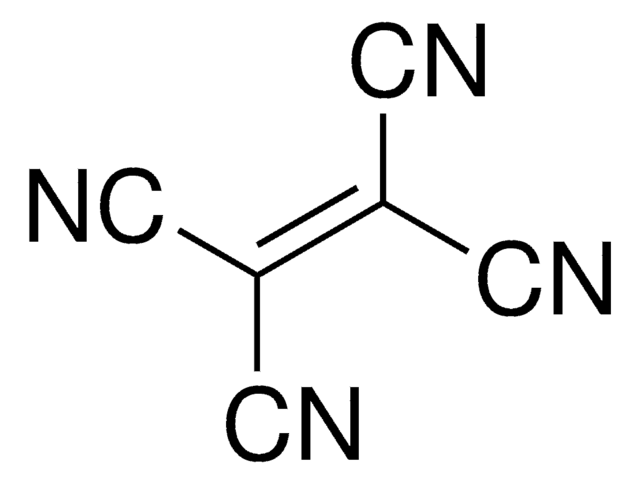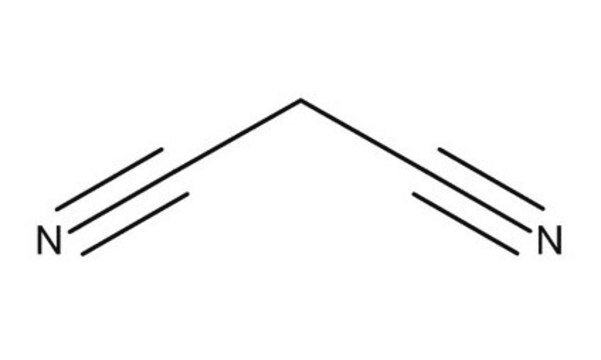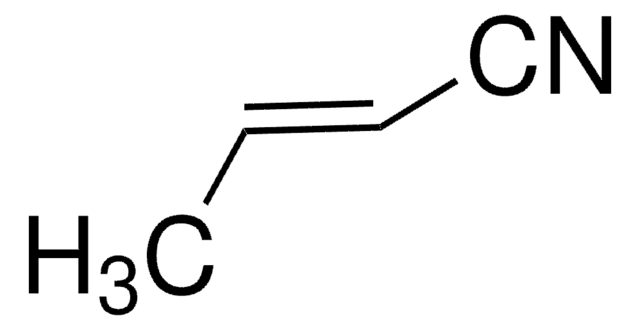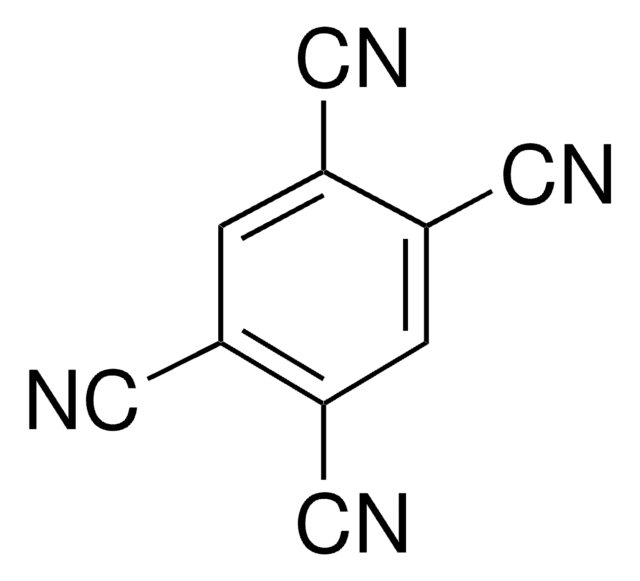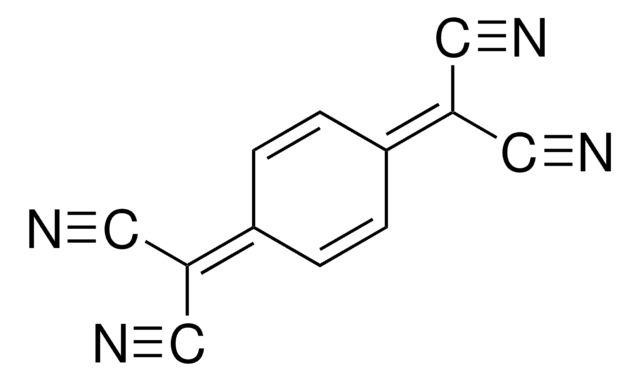131016
Fumaronitrile
98%
Synonym(s):
trans-1,2-Dicyanoethylene
Sign Into View Organizational & Contract Pricing
All Photos(2)
About This Item
Linear Formula:
NCCH=CHCN
CAS Number:
Molecular Weight:
78.07
Beilstein:
969245
EC Number:
MDL number:
UNSPSC Code:
12352100
PubChem Substance ID:
NACRES:
NA.22
Recommended Products
Quality Level
Assay
98%
form
solid
bp
186 °C (lit.)
mp
93-95 °C (lit.)
solubility
ethanol: 50 (mg/mL; colorless to yellow)
SMILES string
N#C\C=C\C#N
InChI
1S/C4H2N2/c5-3-1-2-4-6/h1-2H/b2-1+
InChI key
KYPOHTVBFVELTG-OWOJBTEDSA-N
Looking for similar products? Visit Product Comparison Guide
Related Categories
Signal Word
Danger
Hazard Statements
Precautionary Statements
Hazard Classifications
Acute Tox. 3 Oral
Storage Class Code
6.1C - Combustible acute toxic Cat.3 / toxic compounds or compounds which causing chronic effects
WGK
WGK 3
Flash Point(F)
Not applicable
Flash Point(C)
Not applicable
Personal Protective Equipment
dust mask type N95 (US), Eyeshields, Gloves
Choose from one of the most recent versions:
Already Own This Product?
Find documentation for the products that you have recently purchased in the Document Library.
Customers Also Viewed
Alicja B Veselá et al.
Applied microbiology and biotechnology, 100(5), 2193-2202 (2015-11-02)
The aim of this study was to discover new nitrilases with useful activities, especially towards dinitriles that are precursors of high-value cyano acids. Genes coding for putative nitrilases of different origins (fungal, plant, or bacterial) with moderate similarities to known
Stéphane Pagès et al.
The journal of physical chemistry. A, 110(24), 7547-7553 (2006-06-16)
The ultrafast ground state recovery (GSR) dynamics of the radical cation of perylene, Pe(*+), generated upon bimolecular photoinduced electron transfer in acetonitrile, has been investigated using pump-pump-probe spectroscopy. With 1,4-dicyanobenzene as electron acceptor, the free ion yield is substantial and
Yinlong Yang et al.
Biomaterials, 33(31), 7803-7809 (2012-07-24)
We report a new strategy of using carrier-free pure near-infrared (NIR) dye nanoparticles (NPs) to achieve highly luminescent NIR fluorescent probes for in vitro and in vivo imaging. Bis(4-(N-(2-naphthyl)phenylamino) phenyl)-fumaronitrile (NPAPF) NPs are shown to exhibit favorable biocompatibility, wide-range pH
R Schlegelmilch et al.
Journal of applied toxicology : JAT, 8(3), 201-209 (1988-06-01)
Two aliphatic nitriles, acetonitrile and fumaronitrile were tested for their genotoxic potential in three mutagenicity test systems: the Salmonella/microsome-assay, an assay using Saccharomyces cerevisiae (strain D7), and the bone marrow micronucleus test. Both compounds were tested with and without metabolic
J M Wyatt et al.
Biodegradation, 6(2), 93-107 (1995-06-01)
Effluent from the manufacture of acrylonitrile is difficult to biodegrade. It contains nine major organic components: acetic acid, acrylonitrile, acrylamide, acrylic acid, acrolein, cyanopyridine, fumaronitrile, succinonitrile, and maleimide. A range of bacteria have been isolated that can grow on, or
Our team of scientists has experience in all areas of research including Life Science, Material Science, Chemical Synthesis, Chromatography, Analytical and many others.
Contact Technical Service



